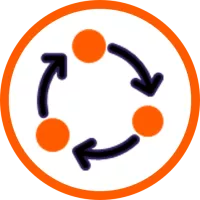Data about your data
What is metadata? The answer that you will hear most: “It’s data about your data”. But doesn’t that make it data in its own right? Indeed, it is! And that means it can also be used to gain insights. But instead of getting insight into your business, your customers, and your products, you gain insight into your data itself:
- “Where can I find the data I need?“
- “What type of data am I working with?“
- “What is the calculation behind this number?”
We can categorize metadata into three main categories:
 Technical metadata |
 Business metadata |
 Operational metadata |
Technical metadata describes the technical nature of the data and is most often consulted by the data and ICT-teams. It will provide more information on how data is stored (physical storage location, table names, column names, data types...) and the processes behind (data lineage, transformations…).
Business metadata is used to provide some business context to the data. It contains objects that make data more understandable to business users (business terms, definitions, calculations, subject areas…) and enables data governance best practices (business rules, validity ranges…).
Operational metadata tells the story of how and when data was created or transformed. This includes timestamps, users that have created or modified the data, batch information, logs… This type of metadata is often used for monitoring the operation and performance of your data infrastructure.
As organizations grow, they might move more applications into the cloud, they might also set up data platforms for Analytics and BI, and it becomes hard to keep an oversight and understand how everything is related. This also holds true for the data teams, whose day-to-day job is to keep these data flows up and running, but even more so for users at the reporting end, who often experience the black box effect.
In order to keep oversight and keep everyone engaged in the data journey that most companies are going through, solutions like a Data Catalog and a Business Glossary are often introduced. A Data Catalog enables users to find and understand the data by offering the following:
- Powerful search functionality
- Infusing business context with the data
- Enriching the data with an organizational structure
- Providing visibility on where the data originated from and where it is being used
- Tagging and classifying data (e.g. for compliance)
At element61, we can support you with the right tools (Purview, Ataccama, Unity Catalog…) for Data Governance, but more importantly, we can advise you on how to make them work for your organization.
Contact us for more information or with your specific request.
